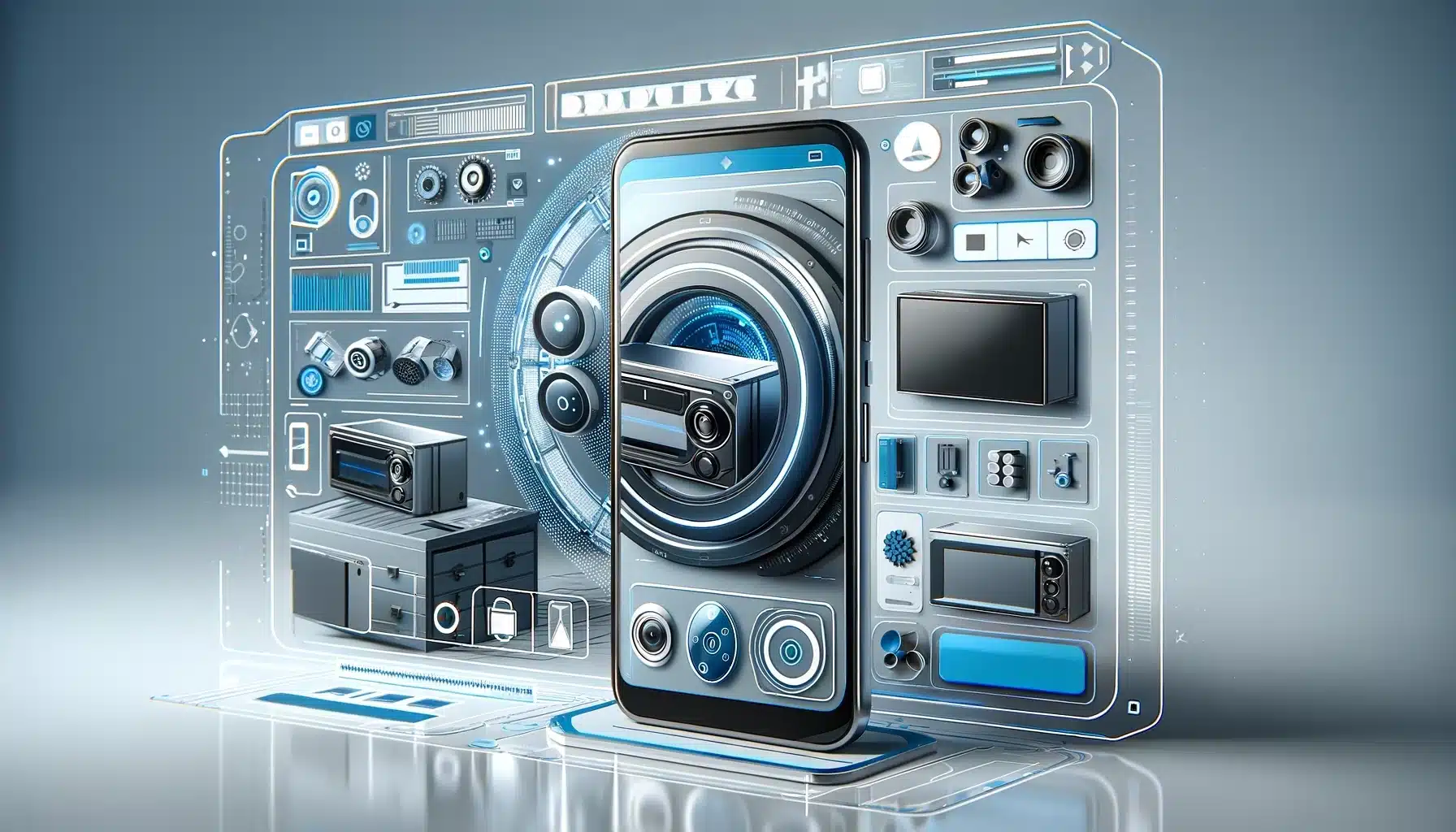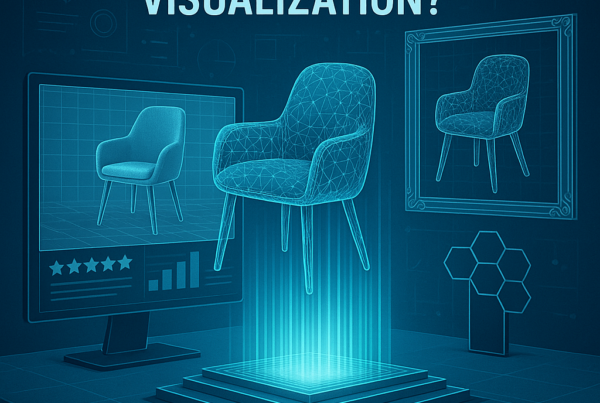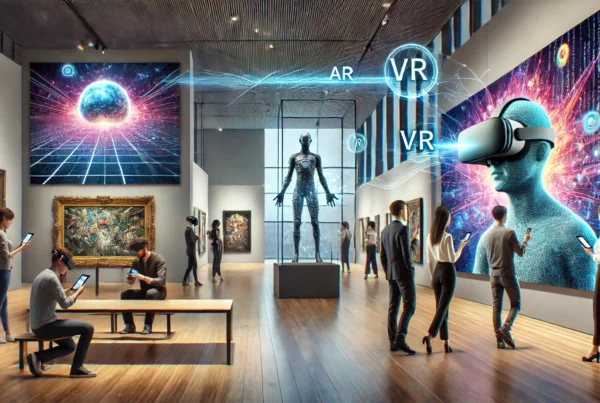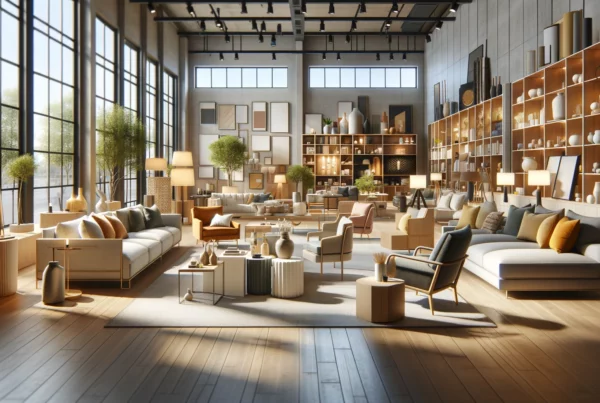In today’s fast-paced digital world, staying ahead of technological advancements is crucial for businesses, especially in eCommerce. One such innovation making waves is the integration of 3D configurators with Augmented Reality (AR). This combination offers an immersive and interactive shopping experience that traditional online methods can’t match.
This article explores the significant benefits of using 3D configurators with AR, and provides practical insights on implementing this technology effectively. Whether you’re looking to enhance user engagement, increase customer satisfaction, or boost sales, understanding and leveraging these tools can set your business apart in a competitive market.
Discover how they can transform the online shopping experience.
What is a 3D Configurator?
A 3D configurator is a powerful tool that lets users see and customize products in a three-dimensional space. This technology has become popular in many industries, including automotive, furniture, and fashion. Customers can interact with products in ways that were not possible before, adjusting features to their liking and viewing changes from all angles. This interactive experience makes the shopping process more engaging and enjoyable.
Benefits of Using 3D Configurators
3D configurators offer numerous benefits, including enhanced user engagement through interactive and immersive experiences, personalized customer journeys, and increased sales conversions. They empower customers to make informed decisions by visualizing products from different angles and customizing features according to their preferences.
Process of Creating a 3D Configurator with Mazing
Creating a 3D configurator with Mazing is a simple and effective process. It starts with an initial consultation where we discuss your goals and specific needs. This helps us understand what you want to achieve and the customization options you need. After setting clear goals, we move to the creation phase. Our team takes care of everything, from designing initial mockups to developing the final product. We ensure that the configurator not only looks good but also functions perfectly, offering a seamless user experience. Once the configurator is ready, we integrate it into your webshop. Mazing works with all major shopping platforms like WooCommerce, Shopify, and Shopware. This makes the integration process smooth and straightforward, ensuring that your customers enjoy an enhanced shopping experience without any technical hassles.
Prices of 3D Configurator
The cost of a 3D configurator depends on its complexity and the level of customization. Basic configurators, including shop integration, typically start at around €4,000. For more advanced configurators with additional features and detailed designs, prices can range from €15,000 to €40,000. Very complex and highly customized configurators can exceed €100,000. These costs cover the entire process, from development and design to integration and optimization, ensuring that you get a high-quality tool that significantly enhances your customers’ shopping experience and boosts your business’s efficiency and sales.
Integrating Augmented Reality (AR)
What is Augmented Reality?
Augmented Reality (AR) seamlessly blends digital elements with the physical world, enriching the user’s perception of their surroundings. Unlike Virtual Reality (VR), which creates an entirely virtual environment, AR overlays digital content onto the real world, enhancing the user’s experience without isolating them from their physical environment.
Benefits of AR in 3D Configurators:
Augmented Reality (AR) takes 3D configurators to the next level, offering immersive and interactive experiences that traditional methods cannot match. With AR, customers can place virtual products in their actual environment, which helps them see how items will look and fit in their space. This realistic visualization makes the decision-making process easier and more enjoyable.
One of the key advantages of using AR in 3D configurators is the ability to provide a highly personalized experience. Users can view products from every angle and even walk around them, giving a true sense of scale and detail that static images or videos cannot provide. This level of interaction helps customers feel more confident about their choices, as they can see exactly how a product will look in their home or office.
Moreover, AR can lead to higher customer satisfaction. When customers have a clear and accurate representation of the product in their own space, they are less likely to experience disappointment after purchase. They can experiment with different configurations, colors, and sizes, ensuring the product meets their needs and preferences perfectly.
In addition, AR-enhanced 3D configurators can drive higher engagement. The interactive nature of AR keeps users interested and entertained, encouraging them to spend more time exploring products. This increased engagement often translates into higher conversion rates, as customers who interact more deeply with products are more likely to make a purchase.
Key Features of a 3D Configurator with AR View
Real-Time Rendering
Real-time rendering is crucial for delivering a seamless and engaging user experience. It allows users to see instant updates to their customizations, providing immediate feedback and ensuring a smooth interaction with the configurator.
Interactive User Interface
An intuitive and responsive user interface is essential for maximizing user engagement. A well-designed UI makes it easy for users to navigate through various options, customize products, and visualize changes in real time, leading to a more enjoyable and productive experience.
Customization Options
Offering extensive customization options is key to meeting diverse customer needs. Allowing users to personalize various aspects of a product, such as color, size, and features, enhances their satisfaction and likelihood of purchase. The ability to tailor products to individual preferences creates a sense of ownership and uniqueness.
Best Practices for 3D Configurators with AR View
Optimizing Performance for Different Devices
Ensuring smooth performance across all devices is crucial. Consider these tips:
- Smart Resource Use: Adjust the detail of 3D models according to the device’s capabilities and the user’s current view to maintain efficiency.
- Reduce File Sizes: Compress images and models to speed up loading times and lower memory usage without sacrificing quality.
- Harness Device Power: Leverage the graphics processing power available on various devices, from high-end computers to smartphones, to keep performance consistent.
Ensuring Cross-Platform Compatibility
Your 3D configurator should function seamlessly on any device or platform. Follow these guidelines:
- Adaptable Design: Create an interface that works smoothly on desktops, tablets, and smartphones, adjusting to different screen sizes automatically.
- Use Versatile Tools: Employ development tools like Unity or Unreal Engine to deploy your configurator across various platforms, including iOS, Android, Windows, and macOS.
- Browser-Friendly: Ensure compatibility with all major web browsers like Chrome, Firefox, Safari, and Edge, using WebGL for smooth 3D graphics.
Enhancing User Experience with Intuitive Design
Providing a great user experience is key to keeping customers engaged. Consider these strategies:
- Design for Users: Conduct research to understand what your users want and need, then design your interface to be intuitive and attractive.
- Easy Navigation: Ensure the navigation is clear and simple, so users can easily find and customize product features.
- Immediate Feedback: Provide instant visual feedback when users make changes, so they can see the effects of their choices right away.
- Accessibility: Make your configurator usable for everyone, including people with disabilities, by adding features like keyboard navigation and screen reader support. This broadens your audience and improves usability for all users.
Following these best practices will help you create a 3D configurator with AR view that delivers an outstanding user experience, keeps customers engaged, and increases sales.
Conclusion
Integrating Augmented Reality (AR) into 3D configurators transforms the online shopping experience, offering customers a unique way to interact with products. This technology enhances the ability to visualize items in real-world environments, leading to more informed decisions and greater satisfaction. The interactive nature of AR keeps users engaged and entertained, fostering deeper connections with products and increasing the likelihood of purchase.
For businesses, the benefits are clear. AR and 3D configurators can drive higher engagement, improve customer satisfaction, and ultimately boost sales. Implementing best practices such as optimizing performance for different devices, ensuring cross-platform compatibility, and designing an intuitive user interface will maximize these advantages.
As technology continues to evolve, staying ahead with innovations like AR in 3D configurators will help businesses remain competitive and meet the ever-changing needs of their customers. Embracing these advancements not only improves the shopping experience but also builds trust and loyalty among consumers.
The future of eCommerce is here, and AR is a vital part of it.





